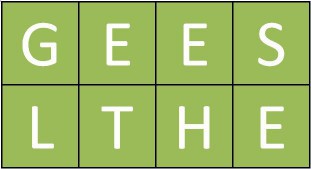By James Derounian (University of Gloucestershire)
As the Times Higher Education put it (2016 online) the “teaching excellence framework will see the government monitoring and assessing the quality of teaching in England’s universities.” Good. It is high time that teaching and research excellence were given parity of scrutiny, importance and reward.
And the UK Government’s Department for Education (2016 online: 19) – in its Teaching Excellence Framework: year two specification argues for Student Outcomes and Learning Gain that are focused on the “acquisition of attributes such as lifelong learning skills and others that allow a graduate to make a strong contribution to society, economy and the environment”.
But how will our undergraduates (and then postgrads) magically gain such skills, capabilities and propensities? Why…….from their forebears! What we need is graduate re-cycling in terms of (recent) Geography, Earth and Environmental Sciences graduates from particular HE institutions being encouraged to return to their alma mater, in order to offer specialist guest lectures, live projects for assignments, work shadowing; internships; input on how to make the progression from study and university into the world of work. It’s not rocket science, and costs little – but usually just requires a bit of care & time.
In my experience, graduates are flattered and only too pleased to be asked to return to the scene of their earlier escapades! And, of course, (recent) graduates can empathise, since they remember what it was like to be an undergraduate, but they can also provide insight, distance and practical wisdom as to how students may amplify their chances of getting into work (linked to their discipline), and to – hopefully – lead fulfilling lives. Those who have gone before can also connect across from the head knowledge of the classroom to what this means in practice.
So, for example, I have built up medium term relationships with graduates who are also employers close to the campus. In this way the Cheltenham West End Regeneration Partnership (a limited community-based company) has taken tens of my internship students over time, who have each completed 80 hours research and activity towards a discreet project. So geographers have completed door-knocking and research in order to gauge resident concerns and possible remedial actions; others have assisted with bringing fund-raising events to fruition; produced a sustainability appraisal for a microbrewery, indicating ways in which the business can operate more profitably and sustainably. The list goes on.
So how do you increase the likelihood that your graduates’ contributions back into teaching and learning are purposeful – to them and the students on the receiving end?
Here are my suggested ‘top ten tips’:
- Select your graduates carefully! Can they communicate (with students?)
- Brief them so that they know exactly what you want them to do, for how long, to whom (e.g. level 5 human geographers); how many, where and when?
- Make clear the ‘deal’ e.g. will you pay their travel expenses? A fee? Or informally get them a book token as thanks; and/ or buy them lunch?
- (As a courtesy) and to ensure smooth-running, be sure to attend the session, and be prepared to steer / prompt questions from the class etc……don’t just abandon them to the ravening wolves!
- Ensure that the graduate session fits into the academic coherence and running order of your module and contact sessions.
- Prepare the students by ‘flagging’ – several weeks in advance – that on a particular date/ class a graduate will be contributing, and how this will benefit students (and their assignment preparation!); twist their arms to attend! It is excruciating if a grad turns up and only half the class is there; most embarrassing all round
- Give plenty of notice to a would-be graduate contributor…..e.g. at least 2 or 3 months, so they can prepare, clear attendance with their boss, book time off etc.
- DO ask for their PowerPoint etc materials to ‘capture’ and make available on your VLE (Moodle, Blackboard etc.)
- DO thank them verbally & by e-mail….in fact line up a student to do this. Get them to ‘own’ and take responsibility – if they have to make a vote of thanks then at least they will listen carefully!
- Offer something in return to the graduate – job references? Comment on an application etc: Something for something.
It’s also delightful to network with graduates – discovering where their careers and lives have led them since they too were in your classroom. It’s such a simple, cheap, effective, empathetic means of benefitting your teaching and learning, your students and graduates. What’s not to like?
References
Derounian, J. (2015) Why does the devil have all the good tunes? How researchers continue to put one over teachers in the HE promotion stakes; British Educational Research Association, May 5 online. Available at https://www.bera.ac.uk/blog/why-does-the-devil-have-all-the-good-tunes-how-researchers-continue-to-put-one-over-teachers-in-the-he-promotion-stakes [Accessed 7.10.2016]
HM Government, Department for Education (2016) Policy paper: TEF Factsheet; Available at https://www.gov.uk/government/uploads/system/uploads/attachment_data/file/550232/Teaching-excellence-framework-factsheet.pdf [Accessed 7.10.2016]
HM Government, Department for Education (2016) Teaching Excellence Framework: year two specification; Available at https://www.gov.uk/government/uploads/system/uploads/attachment_data/file/556355/TEF_Year_2_specification.pdf [Accessed 7.10.2016]
House of Commons, Business, Innovation and Skills Committee (2016) The Teaching Excellence Framework: Assessing quality in Higher Education; Available at http://www.publications.parliament.uk/pa/cm201516/cmselect/cmbis/572/572.pdf [Accessed 7.10.2016]
McGhee, P. (2016) Will the Teaching Excellence Framework be a licence for universities to raise fees, Independent 22.8.2016. Available at https://www.theguardian.com/education/2016/aug/22/teaching-excellence-framework-universities-tuition-fees-tef [Accessed 10.10.2016]
Oakeshott, M. (1950) The idea of a university, The Listener magazine, 23-30; Available at https://www.msudenver.edu/media/content/facultyevaltaskforce/sources/oakeshotttheideaofauniversity.pdf [Accessed 8.10.2016]






